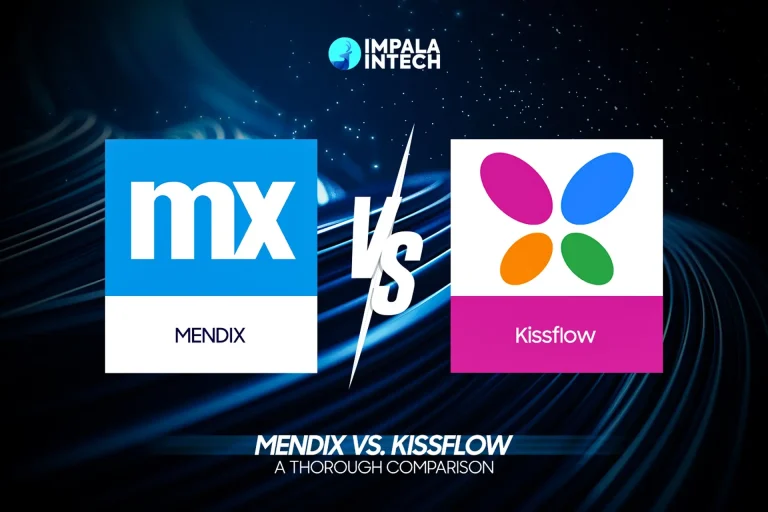
Face recognition can cost anywhere from $0.001 to $0.05 per use, or $20 to $10,000+ monthly, depending on scale and features. As a founder, that range might feel huge—and it is. Costs depend on accuracy, usage, vendor, and whether you use a ready-made API or build your own.
Some startups run on freemium plans, while others pay for custom models and support. It’s not about finding the cheapest tool—it’s about matching the price to your product needs.
This guide will help you cut through the noise, compare real options, and pick the right fit without wasting money.
Is Facial Recognition Cost-Effective?
Facial recognition can be cost-effective—but only when used correctly. Whether it saves money or burns it depends on your goals, scale, and how you deploy it. Let’s break it down in simple terms.
1. What Does “Cost Effective” Mean Here?
Cost-effective means you’re getting enough value for the money you spend. It’s not always about choosing the cheapest option. It’s about whether facial recognition saves time, reduces fraud, improves security, or increases automation without costing more than it helps.
2. What Does Facial Recognition Usually Cost?
Here’s what you’re looking at:
Building your system (including dev time, infrastructure, and maintenance) can cost between $50,000 and $200,000 in the first year.
Cloud-based APIs like AWS Rekognition, Microsoft Azure, or Face++ charge around $0.001–$0.02 per image or face match.
Monthly costs can start from $20 to $100 for small-scale use.
Enterprise solutions with custom training, on-premise deployment, or edge devices can cost $5,000–$10,000+ per month.
Ideal Plan to Build Facial Recognition System (With Practical Demonstration)
We have plenty of experience with such a system and know what works best. Here is a detailed plan for technical people and founders:
Step 1: Define the Purpose
Before writing code, know why you’re building it. The purpose will shape everything—from the tech stack to the cost.
Ask yourself:
- Do I need it for login verification?
- Is it for access control (like smart doors)?
- Do I need live face tracking or just static photo matching?
Step 2: Choose Between API vs. Building From Scratch
Option 1: Use a Pre-built API
Great for MVPs and fast launches.
Popular APIs:
| Provider | Starting Cost | Notes |
|---|---|---|
| AWS Rekognition | ~$1 per 1,000 images | Fast, accurate, easy setup |
| Face++ | ~$0.01 per request | Offers liveness detection |
| Microsoft Azure Face API | ~$1.5 per 1,000 transactions | Good documentation |
Use this if:
- You don’t want to manage training.
- You care more about speed than customization.
Option 2: Build From Scratch (Using Python + OpenCV + Deep Learning)
Use this if you want full control or offline systems.

Step 3: Set Up the Tech Stack
Here’s a practical tech stack you can use:
| Component | Tool / Library |
|---|---|
| Programming | Python |
| Face Detection | OpenCV / MTCNN |
| Face Recognition | Dlib / FaceNet / DeepFace |
| Backend | Flask or FastAPI |
| Database | PostgreSQL / MongoDB |
| Frontend | React / HTML-CSS |
| Storage | AWS S3 / Firebase |

Step 4: Collect and Prepare the Dataset
You need a clean set of face images.
- At least 5–10 clear images per user from different angles.
- Use a consistent background and lighting if possible.
- Store images in folders by user ID or name.
plaintextCopyEdit/dataset
└── John/
├── img1.jpg
├── img2.jpg
└── Maria/
├── img1.jpg
├── img2.jpg

Step 5: Train or Load Face Recognition Model
If using FaceNet, Dlib, or DeepFace:
- Convert images into face embeddings (numerical vector format).
- Store embeddings in a database.
- Use cosine similarity or Euclidean distance for matching.
Example with DeepFace In Python:
pythonCopyEditfrom deepface import DeepFace
result = DeepFace.find(img_path="test.jpg", db_path="dataset/")
print(result)

Step 6: Build a Simple Interface (Optional but Helpful)
Create a front-end where users can:
- Upload a photo
- See matched results
- Track recognition logs
Use Flask + HTML for quick results.
Step 7: Test Accuracy and Speed
Important metrics to test:
- Accuracy rate (aim for 95%+)
- False acceptance and rejection
- Response time (ideal <1 sec per match)
Tips:
- Use real-world lighting and angles.
- Try with and without glasses, masks, etc.
Step 8: Add Security and Privacy
- Encrypt stored data.
- Don’t store raw images—store face embeddings.
- Follow GDPR or regional laws.
- Add user consent steps if needed.
Step 9: Deploy and Monitor
Deploy the app on the cloud (AWS, Heroku, or DigitalOcean).
Add logging to track usage, errors, and performance.
Set alerts if accuracy drops.
Summary Table: Fast Checklist ✅
| Task | Method | Tools Needed |
|---|---|---|
| Train the model or embed faces | Business logic | N/A |
| Choose build or API | Based on need | AWS / Face++ / OpenCV |
| Set up tech stack | Python stack | OpenCV, DeepFace, Flask |
| Prepare dataset | Manual upload or capture tool | Python, webcam |
| Train model or embed faces | Prebuilt or custom | DeepFace / FaceNet |
| Build interface | Optional UI | Flask + HTML |
| Test and refine | Accuracy and speed | Real face tests |
| Add security and deploy | Encrypt + host | AWS / DigitalOcean |
Face Recognition Systems We Built at Impala InTech
At Impala InTech, we’ve designed and developed full-scale facial recognition systems for different industries—each with unique challenges, workflows, and goals. Our strength lies in practical implementation. We don’t just plug in libraries—we build systems that work in the real world.
Below, we’ll discuss two of our proudest projects. Each reflects our approach to engineering, product thinking, and client success.
1. Veriscan ID – A Lightweight Facial Verification Tool for SaaS Platforms
Veriscan ID was created for a startup that offered remote onboarding for SaaS tools targeting the education and HR sectors. They needed a facial verification solution that could be embedded directly into their client’s web apps. The goal is to verify user identity during registration or login using only a webcam or mobile camera.
🔍 Key Features We Built
- Face match with photo ID: Users were prompted to upload a government ID and take a live selfie, and the system compared both.
- Liveness detection using blink detection and subtle head movement prompts.
- SDK Integration with popular frontends like React and Vue.js.
- API-first design, allowing clients to build their UI on top of our system.
- Language-neutral backend, accessible via REST API.
💡 Technical Stack
- Python (FastAPI) for backend
- DeepFace and MTCNN for facial embedding and detection
- AWS S3 for image storage
- PostgreSQL for metadata and match results
- React for the demo dashboard
- Docker + CI/CD pipelines for seamless deployment
🚀 Results & Performance
- Average match time: <1.2 seconds
- 98.3% face match accuracy (after 5,000 test cases)
- API response time: <500ms on AWS Lambda
- Integrated by 7 SaaS platforms within 3 months of launch
📝 Client Feedback:
“Veriscan helped us add KYC verification without slowing down onboarding. Our devs loved the modular API—it saved weeks of work.”

2. GateSight – Smart Access Control with Edge Deployment
GateSight was built for a manufacturing company that wanted secure, contactless entry to high-restriction zones inside its plant. Due to network restrictions inside the facility, the company’s keycards and PIN pads were unreliable and often failed.
We proposed a facial recognition access system deployed on local edge devices without cloud dependency.
🔍 Key Features We Built
- Offline-first facial matching using Dlib and local embedding database
- Raspberry Pi + camera setup for low-cost edge deployment
- Access logging with timestamps, location data, and face confidence score
- Admin dashboard to manage users, access permissions, and view logs
- Emergency override and mask support built in after initial deployment
💡 Technical Stack
- Python + Dlib for face recognition
- SQLite for lightweight local storage
- Flask for device-side control panel
- WebSocket-based admin control for real-time unlock/lock
- Encrypted USB backups for the database and logs
🔐 Challenges We Solved
- Worked in low-light factory environments using IR camera adjustments
- Added real-time alerts for unauthorized face attempts
- Used hardware acceleration to keep match times under 1 second
🚀 Results & Performance
- 96.5% recognition accuracy under varied lighting
- 100% uptime after 60 days of real-world use
- Reduced tailgating incidents by over 80%
- Installed across 4 facility zones within 5 weeks
📝 Client Feedback:
“The system works flawlessly even when our workers wear safety gear. It’s reliable, fast, and doesn’t rely on flaky Wi-Fi. Impala nailed it.”

Conclusion
Each system was designed from the ground up.
One focused on cloud flexibility and scale, while the other tackled offline reliability in harsh environments. We tailored the tools, tech, and workflows to each use case. We didn’t just build software—we solved problems.
At Impala InTech, we don’t overengineer. We build what’s needed, test obsessively, and deliver results that work from day one. Ready to take the next step? Build smart, test thoroughly, and stay human-focused. That’s how facial recognition creates value, not just features.
FAQs
Is it legal to use face recognition?
Yes, in many regions it is legal, but with some rules. You must get user consent and follow privacy laws like GDPR or CCPA. For public surveillance or employee monitoring, check your local regulations first. Illegal use can lead to fines or lawsuits, so keep data use clear and transparent.
Can I buy facial recognition software?
Yes, you absolutely can—and we offer it at Impala InTech. We provide ready-to-use and custom-built facial recognition software tailored to your needs. Whether you need it for login systems, secure access, or identity checks, we can help. Our systems work on web, mobile, or edge devices, and can be deployed with full support. Contact us to learn more or request a demo.
Where can I get Face Recognition APIs?
You can get face recognition APIs from several reliable platforms:
| Provider | Features |
|---|---|
| AWS Rekognition | Face match, search, liveness |
| Microsoft Azure | Facial attributes, emotion, and age |
| Face++ | Liveness, comparison, ID scan |
| TrueFace | On-premise, offline SDKs |
If you prefer building in-house, you can also use open-source APIs like DeepFace or FaceNet.
At Impala InTech, we can integrate these APIs into your platform or build one from scratch for your use case.







